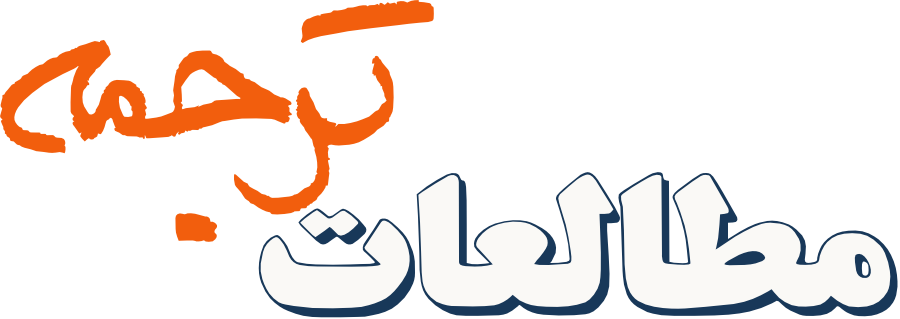ترجمه و کارکرد زبان در کتابهای مردمشناسی
چکیده
مردمشناسان با سفر به مناطق دوردست و ناشناخته تحقیقات میدانی خود را انجام میدهند. در مراحل مختلف تحقیق شامل جمعآوری داده و سپس حین نگارش مطالب، ترجمه همواره جزو جداییناپذیر محسوب میشود. بهطور کلی مردمشناسان فرهنگ ناشناخته و آنچه را که در میدان میشنوند به قالب متنی ترجمه میکنند. نحوۀ برخورد مردمشناسان با زبان و مسائل مرتبط با ترجمه شامل اهداف پژوهش حاضر بود. برای این منظور پیکرهای شامل 30 کتاب مردمشناسی جمعآوری شد و براساس روش ماتریکس (جرارد، 2011) و روش رمزگذاری دیکاسانوآ و براون (2017) دادهها جمعآوری شدند. نتایج نشان داد که تنها تعداد محدودی از نویسندگان به مسئلۀ زبان و ترجمه در متن توجه خاص نمودند. با این وجود آنهایی که به مسئلۀ ترجمه در متن اشاره کرده بودند راهکارهایی ارزشمند جهت رفع مشکلات حین ترجمه ارائه کرده بودند.
کلمات راهنما:
مردمشناسی فرهنگی, ترجمه, روابط قدرتمراجع
Bāmdād, M. (1357/1978). Tārikh-e rejāl-e Irān dar qarn-e 12 wa 13 wa 14 hejri [History of the distinguished men of Iran in 12th, 13th and 14th AH] (Vols. II, III, V). Tehran: Zavār.
Chesterman, A. (2009). The name and nature of Translator Studies. Hermes – Journal of Language and Communication Studies, 42, 13-22.
Dāstānhā-ye Tārīkhī: Madam Hāji ʿAbbas Golsāz [Historical tales: Madam Hāji ʿAbbas, the flower maker]. (1325/1947). Yādegār(26 & 27), 106-109.
De Vivo, F. (2010). Prospect or refuge? Microhistory, history on the large scale: A response. Cultural and Social History, 7(3), 387-397.
Ekhtiar, M. (2001). Nasir al‐din Shah and the Dar al‐funun: the evolution of an institution. Iranian Studies, 34, 153-163.
Eʿtemad al-Saltaneh, M. (1367/1989). Merʿāt al-boldān (Vol. III). Tehran: Tehran University Publication.
Eʿtemad al-Saltaneh, M. (1295AH/1878). Merʿāt al-boldān (Vol. II). Tehran: Dar al-tebaʿe Dowlati.
Eʿtemad al-Saltaneh, M. (1350/1971). Ruzname-ye khaterat-e E’temad al-Saltaneh [Journal of the memories of E’temad al-Saltaneh] (2nd ed.). (I. Afshar, Ed.) Tehran: Amirkabir Publishing Company.
Eʿtemad al-Saltaneh, M. (1363/1984). Tārikh-e montazam-e Naseri [Naseri chronological history] (Vol. III). Tehran: Donyay-e Ketab.
Ginzburg, C. (1993). Microhistory: Two or three things that I know about it. Critical Inquiry, 20(1), 10-35.
Gomez, H. (2017). A closer look into the life of ordinary translators through unordinary sources: The use of obituaries as a microhistory tool to study translators and translation in Ohio. New Voices in Translation Studies, 16, 55-83.
Hazrati, H. (1398/2019). Moʿin al-Molk va sefārat-e Osmāni [Moʿin al-Molk and the Ottoman Embassy]. Faslname-ye Tārikh-e Rāvābet-e Khāreji, 20(78), 9-22.
Levi, G. (1991). On microhistory. In P. Burke (Ed.), New perspectives on historical writing (pp. 93-133). Cambridge: Polity Press.
Mahbūbi Ardakāni, H. (1344/1966). Dovomin Kārevān-e Mʿrefat [The second caravan of knowledge]. Yaghmā, 211, 592-598.
Mahdavi, S. (2016). Rishār Khān. Encyclopædia Iranica, Online edition. Retrieved from http://www.iranicaonline.org/articles/rishar-khan
Māzandarāni, Mirzā Zaki. (1274AH/1857). Translator's Preface. In A. K. Krziž, Mizān al-Hesāb [The Mathematics of Measurement] (pp. 1-4). Tehran: Dar al-tabāeʿy-e Rezā Qoli.
Māzandarāni, Mirzā Zaki. (1274AH/1858). Translator's Preface. In A. K. Krziž, Elm-e jerasqil [The science of crane] (pp. 1-3). Tehran: Dar al-tabāeʿy-e Rezā Qoli.
Munday, J. (2014). Using primary sources to produce a microhistory of translation and translators: theoretical and methodological concerns. The Translator, 20(1), 64-80.
Nasri, A. (1386/2007). Rūyārūī bā tajadod [Facing modernity]. Tehran: Nashr-e Elm.
Paloposki, O. (2016). In search of an ordinary translator: translator histories, working practices and translator–publisher relations in the light of archival documents. The Translator, 1-18.
Pearce-Moses, R. (2005). A glossary of archival and records terminology. (L. Baty, Ed.) Chicago: The Society of American Archivists.
Polak, J. E. (1361/1982). Safarnāme-ye Polak: Irān va Irāniān [Itinerary of Polak: Iran and the Iranian]. Tehran: Kharazmi.
Richard, J. (1322/1943). Tārikh żabt mikonad [History Records]. In K. S̲aqafī, Maqālāt-e gūnāgūn [Various articles] (pp. 42-129). Tehran: n.p.
Werner, C. (2009). POLAK, Jakob Eduard. Encyclopaedia Iranica, Online Edition. Retrieved from https://iranicaonline.org/articles/polak-jakob-eduard
Akhtar, 1297AH/1879-1880, Issues 27-45.
Vaqāyeʿ Itifāqīyeh, 1269AH/1852, No. 98.
Downloads
چاپشده
ارجاع به مقاله
شماره
نوع مقاله
DOR
مجوز
Copyright Licensee: Iranian Journal of Translation Studies. This article is an open access article distributed under the terms and conditions of the Creative Commons Attribution–NonCommercial 4.0 International (CC BY-NC 4.0 license).





